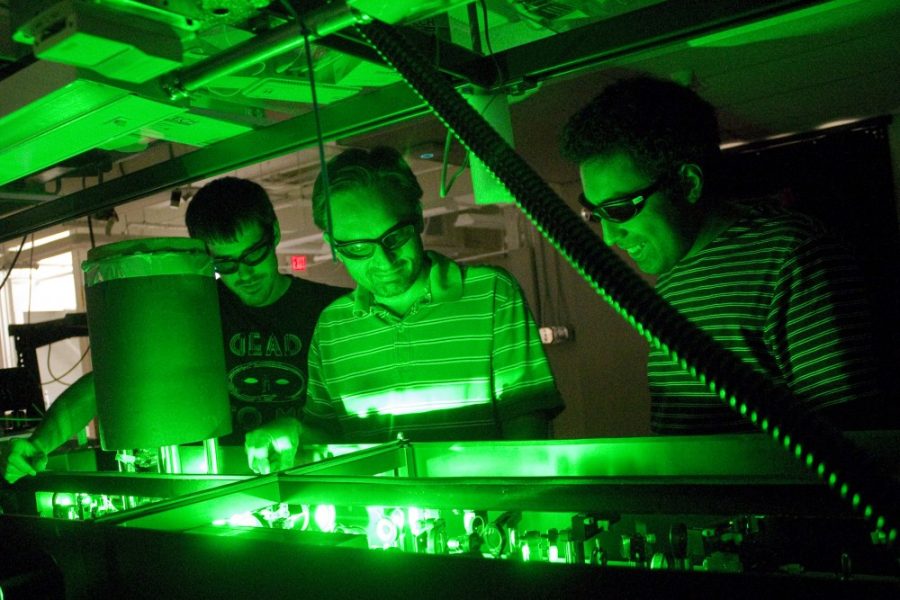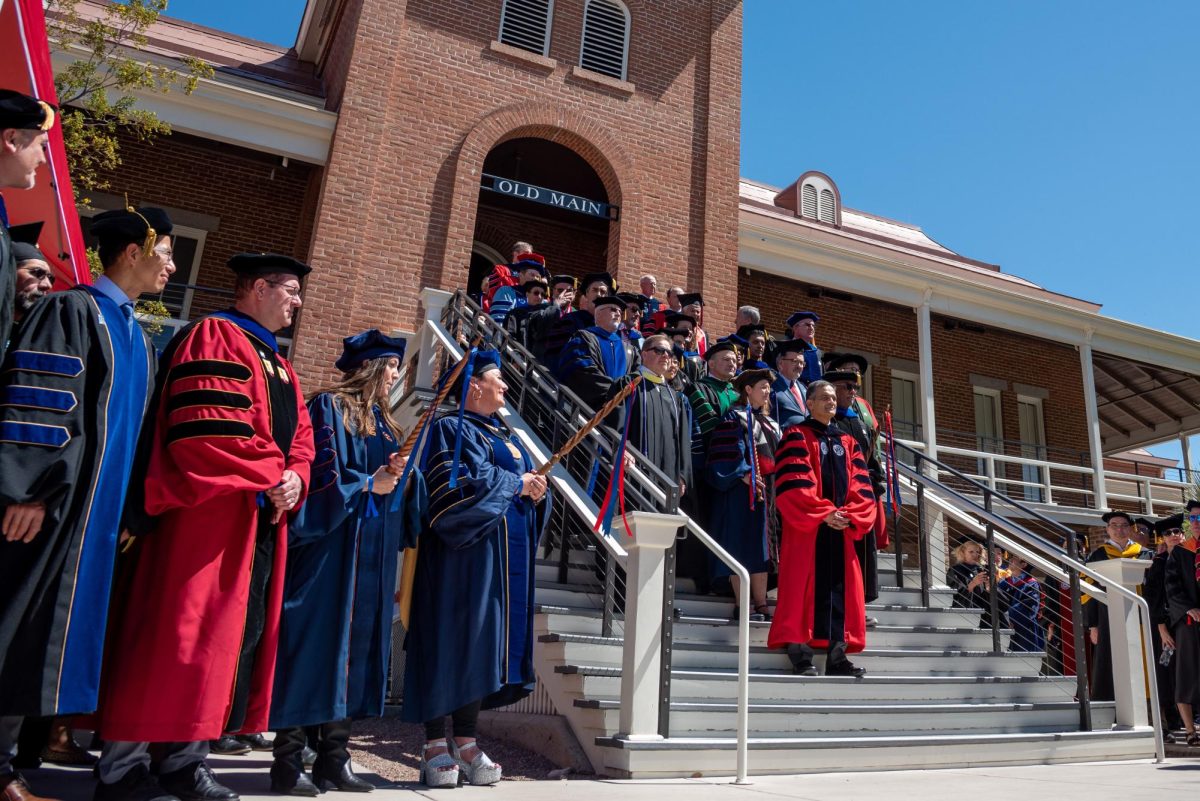UA scientists are using extremely fast pulse lasers to study the movement of electrons, atoms and molecules.
The experiments help scientists to further their fundamental understanding of atomic motions, said Arvinder Sandhu, the assistant professor of physics leading the project. He also said that their findings may eventually have applications in nanotechnology fields, because of the fine control over atoms and molecules demonstrated by the experiments.
The technique, Sandhu said, is called ultra-fast science, and involves using short pulses of light to take pictures of electrons in helium atoms, or the movement of oxygen molecules. The pulses of light are measured in attoseconds, a unit so small that the difference between an attosecond and a second is comparable to the difference between a second and the age of the universe, Sandhu said. He added that the principle is analogous to fast-motion photography.
“If you wanted to see a fast-moving object with your camera, you would need one of two things,” he said. “Either you need a very fast, mechanical shutter that opens and closes very fast so the object doesn’t get blurred, or you need a strobe of light which shines on the object only for a very brief duration, during which you expose your film … and after that, it’s dark again so you don’t get blurring.”
Since it is physically impossible to create a shutter for a camera that moves at attosecond speeds, the only option is to illuminate the object with short bursts of light using lasers.
Lasers that pulse at attoseconds were not available, said Sandhu, so the UA had to build its own. It is possible to buy femtosecond-speed lasers, but these are 1,000 times slower than attosecond speeds. To increase the speed of the light pulses, the femtosecond laser is amplified to high energies, and then focused onto a gas, which breaks electrons from the atoms. These electrons are then projected onto the atom that is being photographed. This process occurs much faster than the laser alone can flash.
The process is extremely delicate, according to Niranjan Shivaram, a physics graduate student who has been working on the project.
“These experiments are extremely challenging and are at the cutting edge of quantum physics and laser technology,” Shivaram said. “To make sure these experiments work, we need to eliminate ‘noise’ from different sources. A mild air flow near our laser beams, the vibrations from a door being shut or even small temperature fluctuations of a few degrees Fahrenheit can adversely affect the outcome of our experiments.
“The fact that we can actually ‘watch’ the dance of electrons inside atoms blows my mind every time I do these experiments,” he said.








